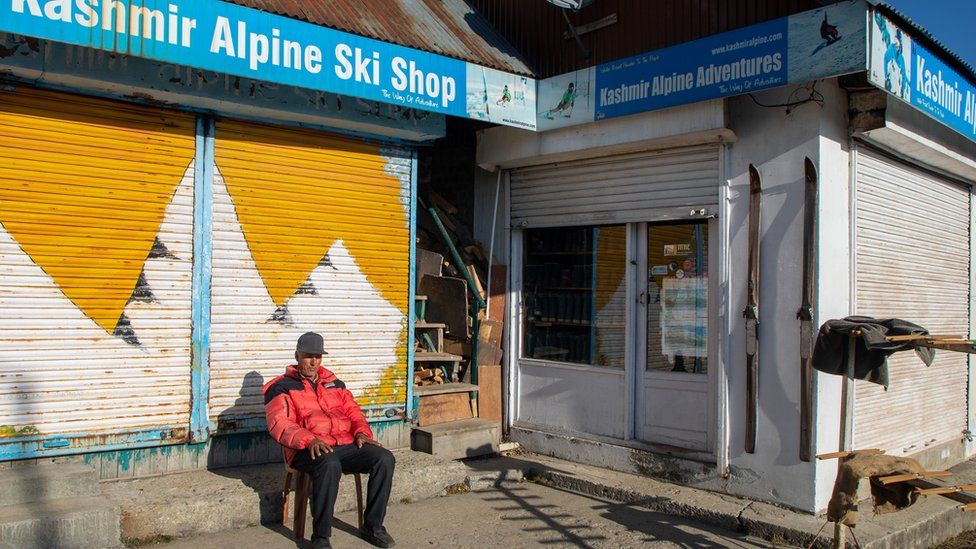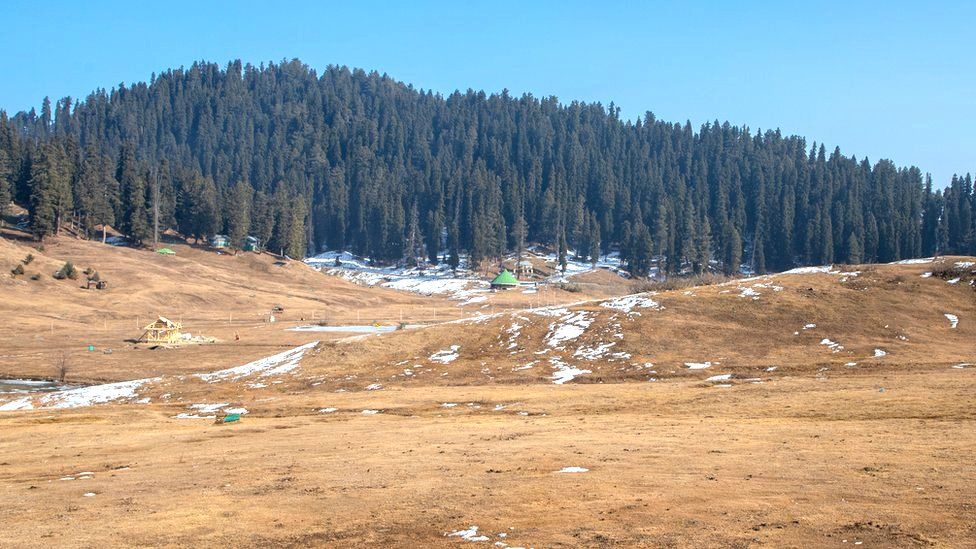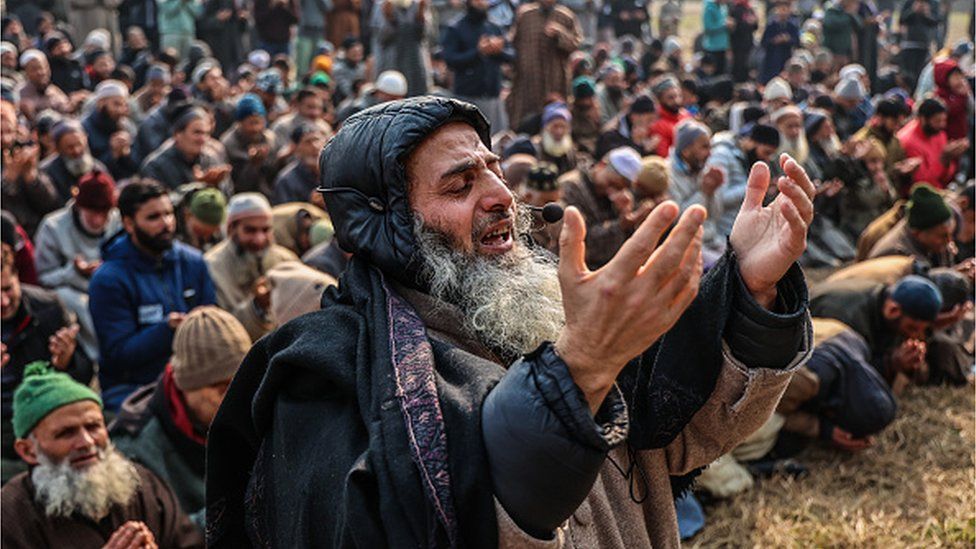In his 17 years of managing a hotel in Gulmarg, a picturesque town in Indian-administered Kashmir, Manzoor Ahmad has never seen a season without snow.
But this year, things are different: the snow-clad mountains in the region are oddly brown and barren.
“This is unprecedented,” Mr Ahmad, 50, says, and adds that tourists have stopped making reservations at his hotel.
Every year, thousands of tourists visit Kashmir in winter to enjoy skiing and sightseeing. But the absence of snowfall this year has bought the region’s tourism industry to its knees.
Close to 100,000 tourists visited Kashmir last January, but this year that number has reduced by more than half, officials say.
Experts say the snowless winter will have a disastrous impact on the territory’s economy as the tourism sector accounts for about 7% of Jammu and Kashmir’s GDP. It will also impact farming and water supply as scanty snowfall will not replenish groundwater reserves adequately.
Environmentalists say that climate change has been impacting the region, causing extreme weather events and prolonged dry spells in both winter and summer. Jammu and Kashmir’s weather department recorded a 79% rainfall deficit in December and a 100% deficit in January.
The valley is also experiencing warmer weather, with most stations in Kashmir recording a 6-8C (43-48F) rise in temperature this winter.

Hotel owners say tourists have cancelled their reservations, while many left after visiting the place as they were unable to enjoy skiing or sleigh rides.
“Over 40% of hotel reservations have been cancelled and new bookings are currently on hold,” Aqib Chaya, president of Gulmarg Hoteliers Club, says.
Raj Kumar, a resident of the western state of Maharashtra who visited Kashmir with his family for the first time, says that they were crestfallen.
“We came here to witness snowfall and go on a cable car ride…but we were disappointed to see a snowless Gulmarg,” he says.
The decline in tourists is hurting local businesses, a majority of which rely on tourism in the winter months to survive.
Tariq Ahmad Lone, who heads the pony riders association in Gulmarg which has about 5000 members, says that they have not been able to earn much in the last three months. Pony rides are an enjoyable way to travel through the region’s highlands and hence, a popular tourist activity.
“Our livelihood directly depends upon snow. A snowless season will bring miseries for our families,” he says. He adds that since most of the riders have been engaged in this profession for decades, it’s almost impossible for them to find another source of livelihood.

Showkat Ahmad Rather, who heads the Ski Association of Gulmarg, echoes this sentiment.
“I have been working as a ski instructor for the past 27 years, I can’t switch to doing something else,” he says.
Apart from tourism, experts say that the absence of snowfall will also impact generation of hydroelectricity, fisheries and farming.
The neighbouring territory of Ladakh – another popular tourist destination – is also experiencing a snowless winter.
“The farming here is dependent on glaciers. The glaciers are melting at a fast rate. No snowfall in the peak [winter] season means early that spring water will be a big problem,” environmentalist Sonam Wangchuk says.
“This is one of the driest spells in the Himalayan region,” Sonam Lotus, director of the Meteorological Centre in Leh, says. Irfan Rashid, an assistant professor at University of Kashmir, adds that a drought like situation “can’t be ruled out”.
The region normally receives heavy snowfall during peak winter – a 40-day period that lasts from 21 December to 29 January. During this time, mountains and glaciers get covered with snow and this ensures water supply throughout the year.

Some experts say that snowfall in the region has been declining for the past couple of years.
“Before the 1990s, we would witness heavy snowfall of up to 3ft (0.9m) and it wouldn’t melt until spring. But we are now witnessing warm winters,” Shakil Ahmad Romshoo, an earth scientist, says.
He is among those who believe that the Kashmir valley is facing the “brunt” of climate change.
“Our per capita greenhouse gas emissions are very less compared to other states. People in Kashmir have a very modest lifestyle. We are the victims of global climate change.”
According to a study by Mr Romshoo and his team, the region, including Ladakh, could heat up to “catastrophic levels” by the end of the century – it could witness a rise in temperature by 3.98-6.93C.
Meanwhile, locals continue to hope for a miracle this winter.
The weather department hasn’t predicted a spell of heavy snowfall until 24 January, but Mr Ahmad says that he’s hopeful that nature will be “kind” to them.
